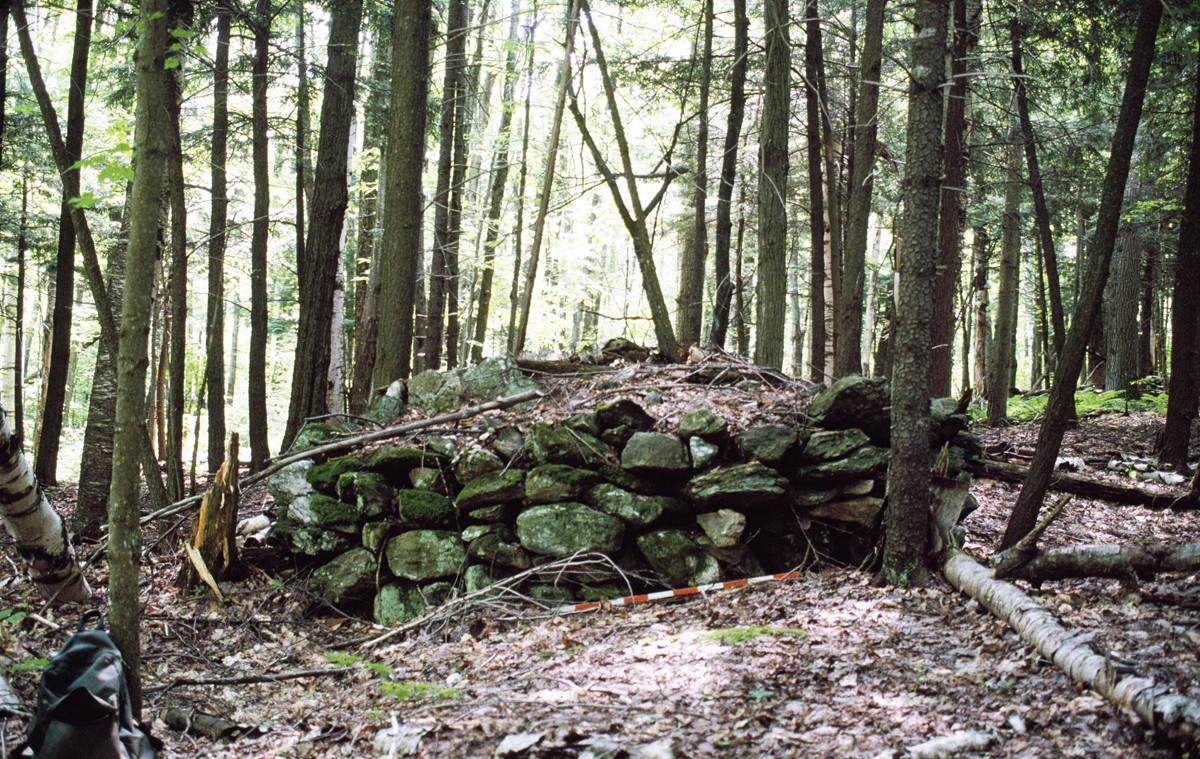Secrets Of Vermont’s Glastenbury Mountain Stone Alignments

Have you ever wondered about the mysteries hidden in Vermont's wilderness? One of the most intriguing secrets lies in the Glastenbury Mountain stone alignments. These ancient formations have puzzled historians, archaeologists, and adventurers for years. Some believe they were created by Native Americans for ceremonial purposes, while others think they might be remnants of early European settlers. Theories even suggest they could be markers for astronomical events. Whatever their origin, these stone alignments offer a fascinating glimpse into the past. Ready to uncover the secrets of Glastenbury Mountain? Let's dive into the history, theories, and the best ways to explore this enigmatic site.
Mysterious Stone Alignments of Glastenbury Mountain
Glastenbury Mountain in Vermont is shrouded in mystery. Known for its eerie tales and unexplained phenomena, the mountain also boasts intriguing stone alignments. These ancient structures have puzzled historians and adventurers alike. Let's delve into some of the most fascinating stone alignments found on Glastenbury Mountain.
1. The Stone Cairns
Stone cairns are small, human-made piles of stones. These structures are often found along trails and summits. On Glastenbury Mountain, the cairns are believed to be ancient markers.
Why they matter:
- Navigation: Cairns may have guided early travelers.
- Spiritual significance: Some believe they marked sacred spots.
- Historical clues: They offer insights into past human activity.
2. The Stone Chambers
Stone chambers are another mysterious feature of Glastenbury Mountain. These small, stone-built rooms are often partially buried.
Intriguing aspects:
- Construction: Built with large, flat stones, they showcase impressive ancient engineering.
- Purpose: Theories range from burial sites to storage rooms.
- Alignment: Some chambers align with astronomical events, suggesting a possible calendar function.
3. The Stone Circles
Stone circles are perhaps the most enigmatic of all the alignments. These circular arrangements of stones can be found in various sizes.
Key features:
- Astronomical alignment: Many circles align with solstices and equinoxes.
- Ritual use: They may have been used for ceremonies or gatherings.
- Energy fields: Some visitors report feeling unusual energy within the circles.
4. The Standing Stones
Standing stones, or menhirs, are tall, upright stones placed in the ground. These solitary stones are scattered across Glastenbury Mountain.
Noteworthy points:
- Height: Some standing stones reach impressive heights.
- Purpose: They might have served as territorial markers or memorials.
- Mystical aura: Legends suggest they possess protective powers.
5. The Dolmens
Dolmens are megalithic tombs made of large stone slabs. These ancient structures are rare but can be found on Glastenbury Mountain.
Fascinating details:
- Construction: Built with massive stones, often with a large capstone.
- Burial sites: Likely used as ancient burial chambers.
- Cultural significance: They provide a glimpse into the burial practices of early inhabitants.
6. The Stone Walls
Stone walls crisscross the landscape of Glastenbury Mountain. These walls, often found in remote areas, add to the mountain's mystery.
Interesting aspects:
- Length: Some walls stretch for miles.
- Purpose: They might have been used for agriculture or as property boundaries.
- Age: Many walls are believed to be centuries old, hinting at long-forgotten settlements.
7. The Effigy Mounds
Effigy mounds are raised earthworks shaped like animals or symbols. While more common in the Midwest, a few can be found on Glastenbury Mountain.
Unique characteristics:
- Shapes: Often resemble animals like birds or serpents.
- Cultural significance: Likely held spiritual or ceremonial importance.
- Archaeological value: They offer clues about the beliefs and practices of ancient cultures.
8. The Stone Rows
Stone rows are linear arrangements of stones. These rows can be found in various lengths and configurations on Glastenbury Mountain.
Notable features:
- Alignment: Some rows align with celestial events.
- Purpose: Theories include boundary markers, processional routes, or astronomical observatories.
- Mystery: Their exact purpose remains a topic of debate among researchers.
9. The Petroglyphs
Petroglyphs are rock carvings created by ancient peoples. On Glastenbury Mountain, these carvings add another layer of intrigue.
Key points:
- Designs: Include symbols, animals, and human figures.
- Age: Some carvings are thousands of years old.
- Cultural insights: They provide a glimpse into the art and communication of early inhabitants.
10. The Stone Cirques
Stone cirques are circular depressions surrounded by stone walls. These unique formations can be found on Glastenbury Mountain.
Interesting aspects:
- Formation: Created by glacial activity or human construction.
- Purpose: Possible uses include livestock enclosures or ceremonial sites.
- Mystery: Their true origin and purpose remain subjects of speculation.
Mysteries Await Your Discovery
Glastenbury Mountain's stone alignments hold many secrets. These ancient structures, hidden in Vermont's wilderness, spark curiosity and wonder. Whether you're a history buff, nature lover, or thrill-seeker, this place offers something unique. Exploring these alignments can feel like stepping back in time, connecting with a past that remains largely unknown.
Visiting Glastenbury Mountain isn't just about the stones. It's about the journey through dense forests, the fresh mountain air, and the sense of adventure. Each step brings you closer to understanding the mysteries that have puzzled many.
Plan your trip, pack your gear, and get ready to uncover the secrets of Glastenbury Mountain. The experience promises to be unforgettable, leaving you with stories to share and memories to cherish. Dive into the unknown and let the mountain reveal its ancient tales.

